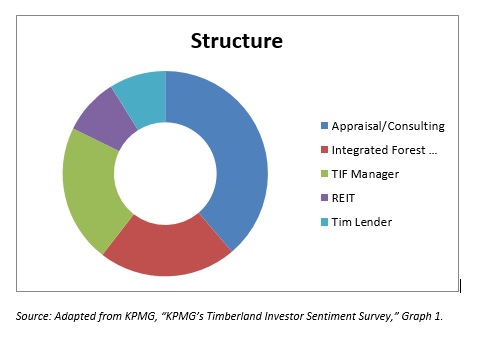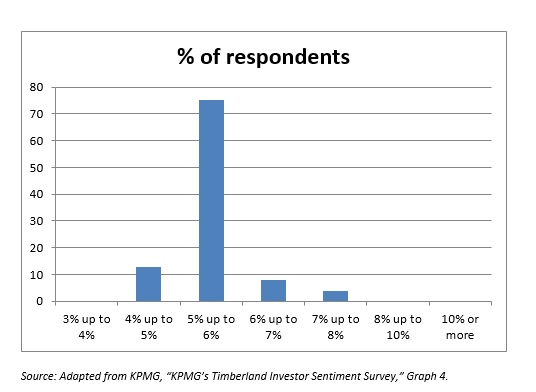Today, we’ll look at KPMG’s effort to determine who exactly the investors in timberland are, what their underwriting assumptions are, and what are their expectations for the coming 12 months.
The firms surveyed included North America’s timberland investment market participants with five different structures: appraisal or consulting organizations; integrated forest products companies; investment fund managers; real estate investment trusts; timberland lender. The breakdown within the respondent group was as follows:

By way of a geographical analysis, the report stipulated that more than half of the participants were active in the coastal northwest and Alaska. The southeastern U.S. was the second more popular region for these respondents, and the northeast was third.
Observations from the survey include the following:
Discount Rates Head Downward
Respondents were asked “what discount rate do you use when evaluating new acquisitions of timberland assets?” Nobody uses a discount rate higher than 8%, or lower than 4%. The most frequently used discount rate range used is from 5% up to, but not including, 6%. The particulars are below.

This is a stark contrast with the results of the same poll a year before. Although the 5%-6% bar was the highest then, too, it was below 60%. Further, a year ago the runner-up category was the next higher, 6% to 7%, given by more than 20% of the respondents. Yet further: in 2015 there were some respondents who said their discount rate was 8% or above – they have all disappeared.







